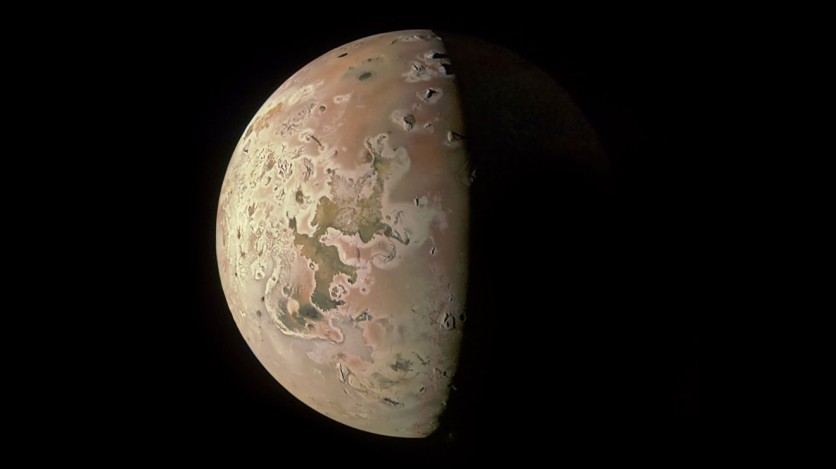NASA's Juno spacecraft is set to make a historic close flyby of Jupiter's moon Io on December 30, marking the nearest approach to the volcanic moon in over two decades.
Coming within approximately 930 miles (1,500 kilometers) of Io's surface, Juno is poised to gather crucial data using its array of instruments, providing scientists with insights into the moon's volcanic activity and geological features.

NASA's Juno Aims to Understand the Dynamics of Jupiter Moon Io's Volcanoes
Juno's principal investigator, Scott Bolton, expressed the significance of this flyby in understanding the dynamics of Io's volcanoes.
The Juno mission aims to study the frequency of eruptions, the intensity of volcanic activity, changes in lava flow patterns, and the correlation between Io's behavior and the charged particle flow in Jupiter's magnetosphere.
This event follows the spacecraft's monitoring of Io's volcanic activity from varying distances, offering unprecedented views of the moon's polar regions.
The upcoming close flyby is part of a series, with another scheduled for February 3, 2024, each aiming to unravel the mysteries surrounding Io's massive volcanic eruptions, the potential existence of a magma ocean beneath its crust, and the influence of Jupiter's tidal forces on the moon.
As Juno embarks on its 57th orbit around Jupiter, it will use all three of its cameras to capture comprehensive data. The Jovian Infrared Auroral Mapper (JIRAM) will focus on infrared imagery, detecting heat signatures from Io's volcanoes. The Stellar Reference Unit and JunoCam imager will work together to capture high-resolution visible-light color images.
Juno's mission, now in its third extended year, not only explores Jupiter's origins but also delves into the gas giant's ring system, where inner moons are situated. Despite the challenging radiation environment around Jupiter, Juno's cameras have endured the harsh conditions.
However, the cumulative effects of radiation have started to impact JunoCam, showing a reduction in dynamic range and the appearance of 'striping' noise, according to Ed Hirst, project manager of Juno at NASA's Jet Propulsion Laboratory in Southern California.
In response to this, the Juno team has adjusted the spacecraft's trajectory to incorporate seven new distant flybys of Io, totaling 18 in the extended mission plan. Following the close Io pass on February 3, Juno will conduct flybys at progressively increasing distances during each orbit.
Strategic Adjustment
This strategic adjustment will not only enable further scientific observations but also alter Juno's orbit, shortening its duration from 38 to 35 days after the December 30 flyby and dropping it further to 33 days after the February 3 flyby.
This new trajectory will also lead to a unique occurrence as Jupiter briefly blocks the Sun from Juno for about five minutes during each perijove or its close flyby, starting from February 3.
Although this marks the first time Juno will experience darkness since its Earth flyby in 2013, the brief eclipse will not significantly impact the spacecraft's overall operation.
The extended mission will also involve occultation experiments using Juno's Gravity Science experiment to investigate Jupiter's upper atmospheric composition, providing valuable insights into the planet's structure and shape.
Related Article : NASA James Webb Space Telescope Snaps 'Great Red Spot' of Jupiter With New Breathtaking Photos!

![Apple Watch Series 10 [GPS 42mm]](https://d.techtimes.com/en/full/453899/apple-watch-series-10-gps-42mm.jpg?w=184&h=103&f=9fb3c2ea2db928c663d1d2eadbcb3e52)



